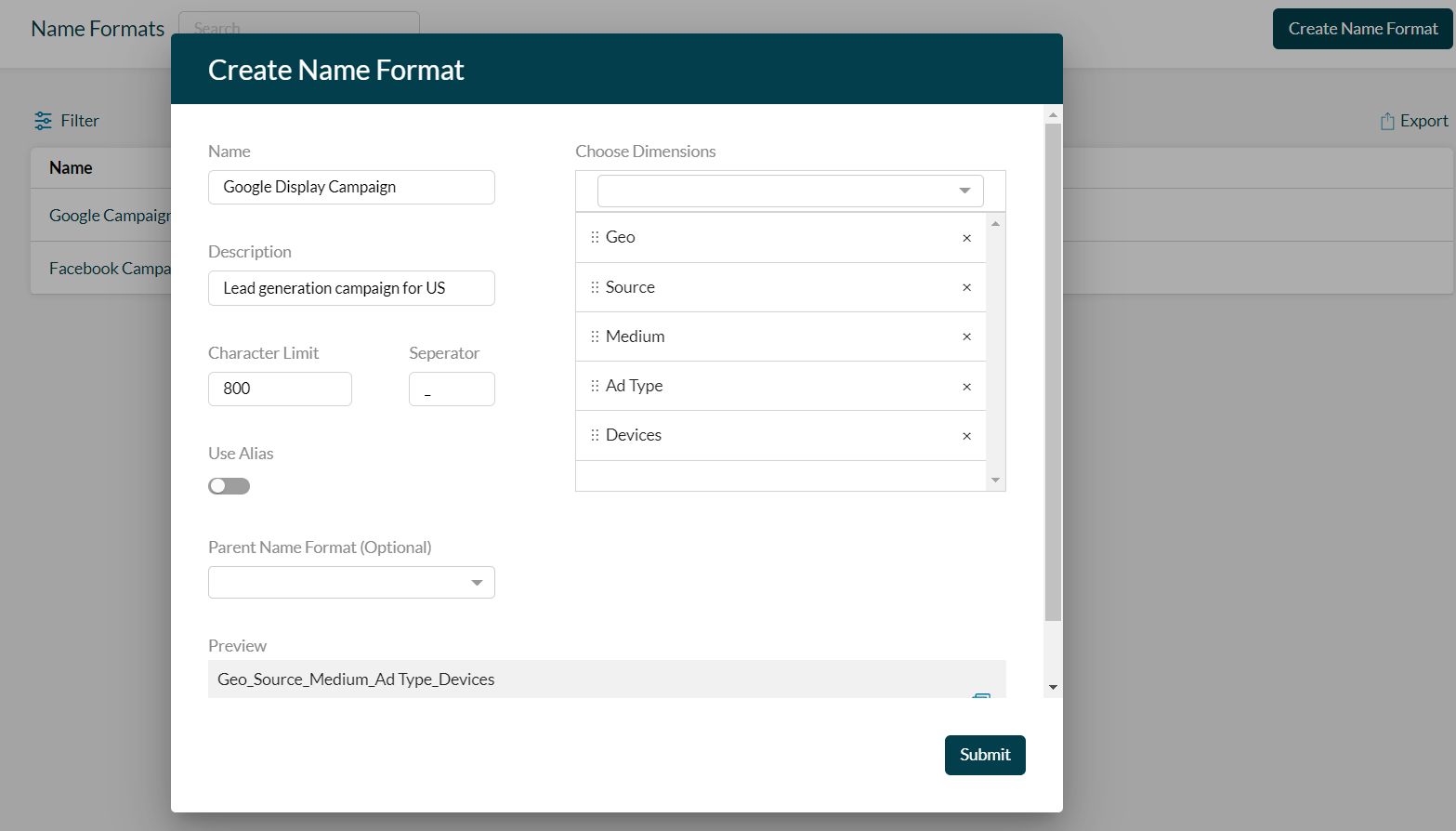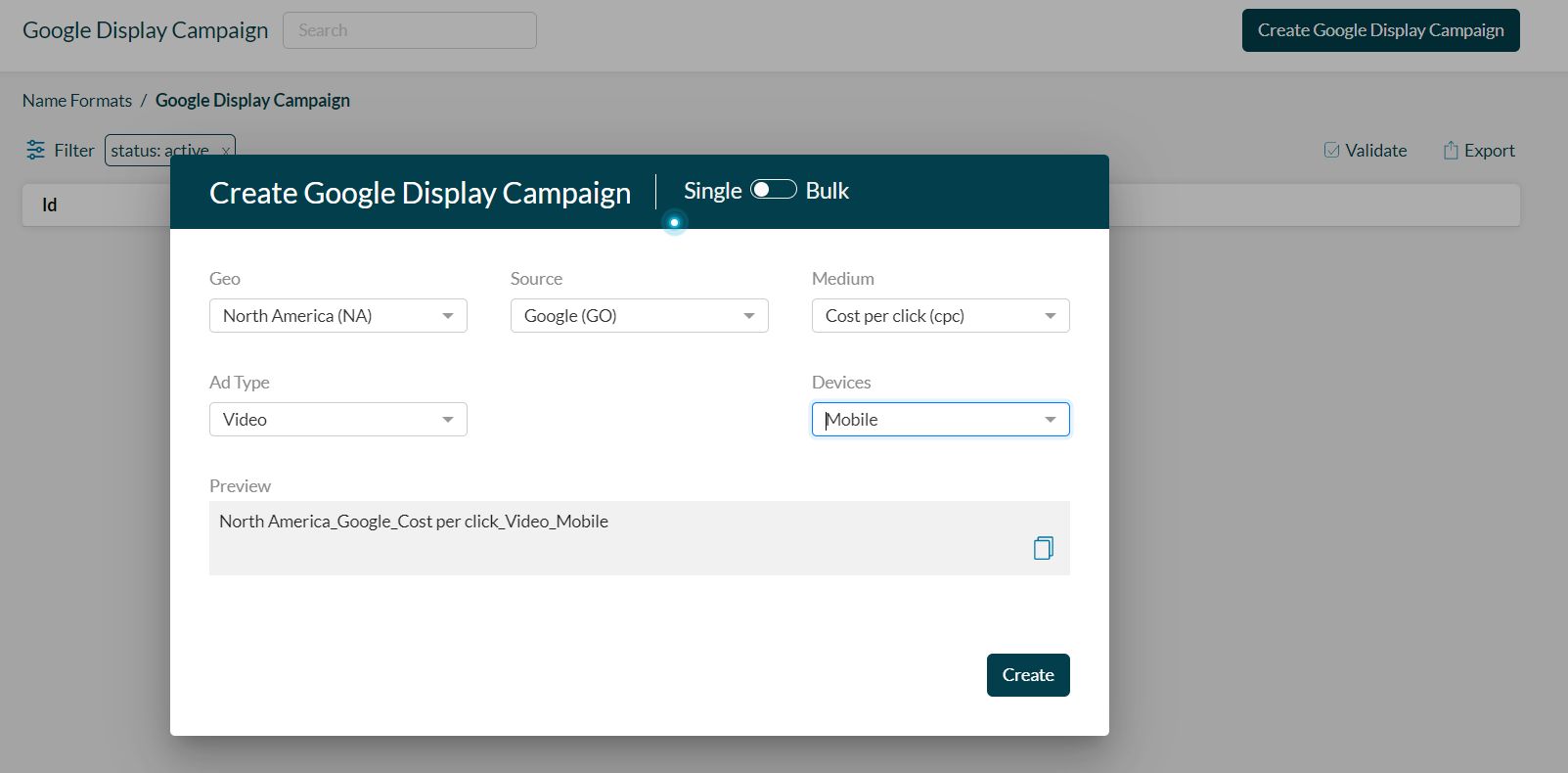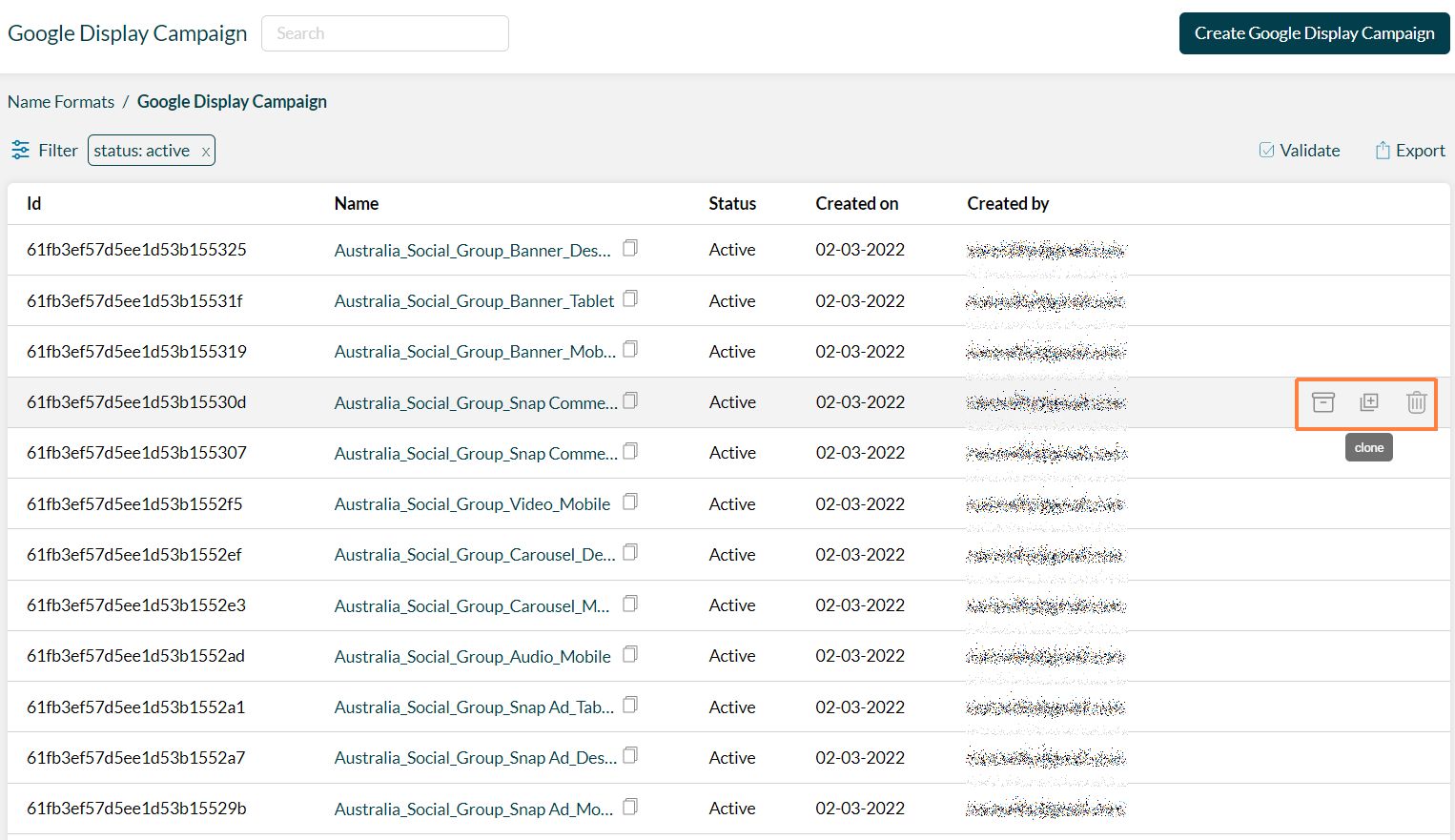Standardize Marketing Taxonomy with CampTag
Standard marketing taxonomy allows you to glean more insights from your campaigns, filter them using specific dimensions for better analytics.
Most marketers name their campaigns with whatever name is convenient, and end up with names like BanneradUS25 or Leadgen150222. Though these names mean something, they capture very little information about your campaign parameters.
And this is a missed opportunity!
Why standardize campaign names or taxonomy?
A standardized marketing taxonomy allows you to add more information to your campaign names, helping in better filtering and better analytics.
A campaign name like US_googleads_ppc_leadgen_displayad_banner_urltagging captures all the dimensions you have used in the campaign URL, thus making your campaign name for informative, easy to filter, and analyze.
Standardizing marketing taxonomy using Name Formats module on CampTag
Creating name formats is very simple and straightforward. Here are some step-by-step instructions on creating your own customized campaign names, using CampTag.
- Go to Name Formats by using the link in the sidebar.
- Click on Create Name Format button on the top right.
- Add a name, description, character limit and separator for the Campaign Name.
- Also add Dimensions from the Dimension list you have created. The understanding here is that you have already created all the Dimensions you want in your campaign, including custom dimensions using the Dimensions module.
- If you have not done that already, go back to the Dimensions module and create them. Name Formats are made using Dimensions, with a separator of your choice in between them. You can also edit your name format later if you want to add more Dimensions.
- The Preview option helps you view the Name Format in real time as you add the Dimensions.
- You can also rearrange dimensions by dragging them.
- A Parent name format can also be selected, if your current name format falls under another one you’ve already created. For example - An Ad Group Name Format would have a parent Campaign Name Format. This hierarchy will help you organize your names better.

Editing or Deleting Name Formats
You can edit or delete name formats by hovering over the name in List View and clicking the options on the right.

Downloading Name formats and values
Each Name format can be downloaded into Excel or CSV file using the same hover option in the List View.
Exporting a list of Name Formats
Export option on the top right of the table can be used to export the full set of Parent and Child Name formats to a CSV or Excel file.
Creating Campaign Names using Name Formats
In order to create campaign names using the name formats you have specified, click on any particular Name Format you have created in the List View. Click on the button on top right.
The dimensions you have enabled while creating the name format will be displayed, with the values associated with them. Choose the relevant options, and Preview to make sure the format is as you want it to be.

You can also create campaign names in bulk using all the dimensions and values you have specified in one shot. Remember that this will create hundreds of campaign names, the exact number will be displayed on the screen before you click the Create button.

Archiving, Cloning or Deleting Campaign Names
Hover over the campaign names in List View to Archive, Clone or Delete Campaigns names that you do not want.

Importing or Exporting Campaign names
Import campaign names in bulk using the Validate button on top, which will also provide you with a template for adding campaign names. You can also export out the full list of campaign names in CSV or Excel format, and share the file with you AdOps teams to enable efficient, error-free Marketing Taxonomy.
URL Tagging
URL tagging is as important as Marketing Taxonomy while creating paid marketing campaigns. Ensuring that you have standardized, error-free URL parameters is essential for seamless campaign analytics.
Here's how to use our URL Formats module for easy URL tagging.
Reach out to us about CampTag if you want to get rid of messy, error-prone spreadsheets for URL tagging.